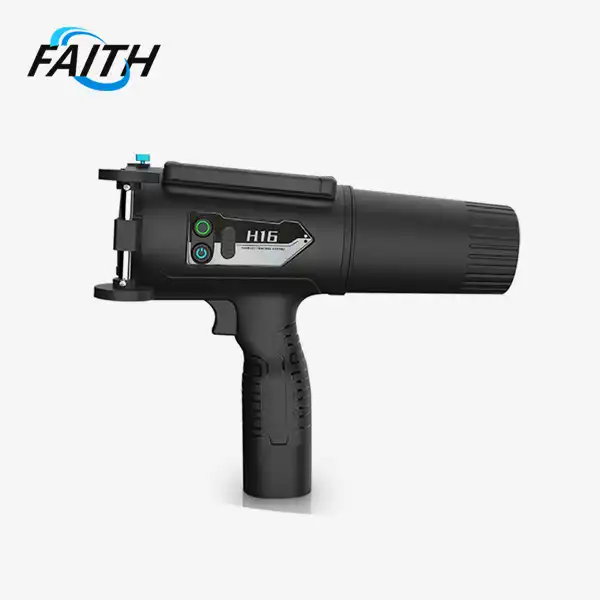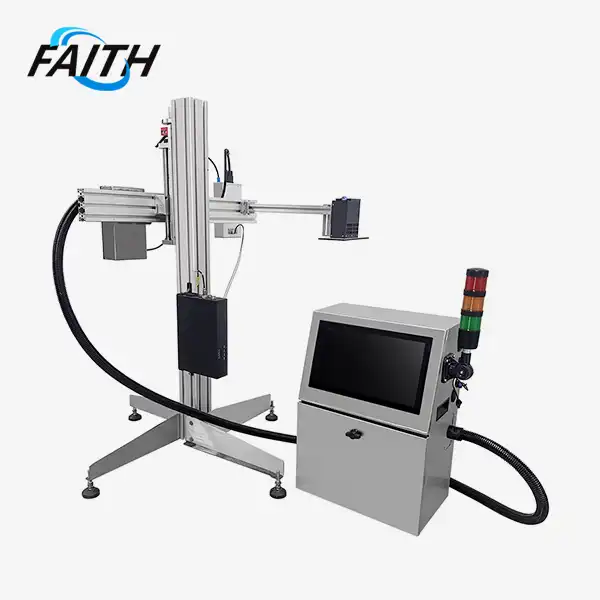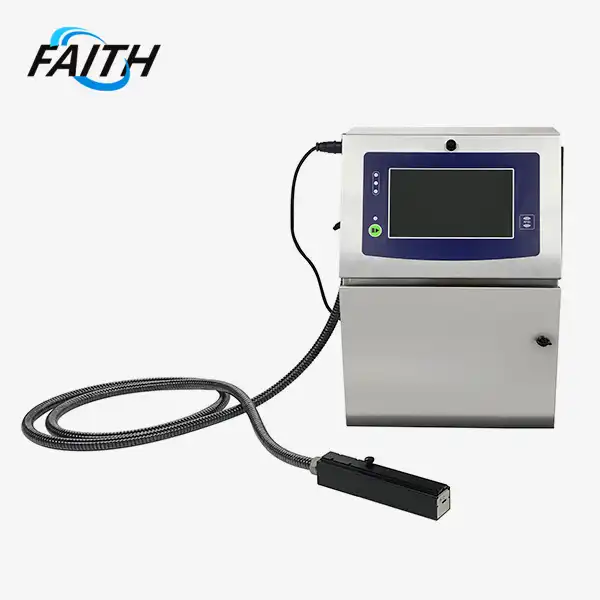Do inkjet printers have tracking dots?
In today's digital age, printing technology has advanced significantly, offering various solutions for industrial and commercial needs. Among these, CIJ Inkjet Printers have emerged as a popular choice for many businesses. However, a question that often arises is whether inkjet printers, including CIJ printers, have tracking dots. Let's delve into this topic and explore the world of inkjet printing technology.
Understanding Tracking Dots in Printing
Tracking dots, also referred to as printer steganography or yellow dots, are little designs implanted in printed archives. These dots are ordinarily imperceptible to the exposed eye and are utilized as a frame of recognizable proof. Their primary reason is to permit the following of printed materials back to the particular printer that created them. These covered up markers can offer assistance specialists track the origin of printed records, making them an apparatus for security and archive confirmation in cases of extortion or unauthorized printing.
While tracking dots are commonly associated with laser printers, especially color lasers, inkjet printers, including CIJ printers, operate differently. Inkjet printers do not typically employ the same tracking dot system found in laser printers. This distinction arises from the fundamental differences in the printing technologies used. Unlike laser printers, which can embed tracking dots as part of the printing process, inkjet printers rely on liquid ink application, making the use of such tracking methods less common or unnecessary in most inkjet printing systems.
CIJ Inkjet Printers, for example, operate by continuously forcing ink through a nozzle to create a stream of fine droplets. These droplets are then electrostatically charged and directed onto the substrate to form the printed image. Due to the nature of this process, it does not support the same hidden marking systems found in laser printers. The method of ink deposition and the lack of a fixed print pattern make it difficult to incorporate tracking dots or similar identification markers in CIJ inkjet printing.
The Unique Features of CIJ Inkjet Printers
Continuous Inkjet (CIJ) printers are highly regarded for their versatility and efficiency in industrial coding and marking applications. Known for their ability to print at high speeds, CIJ printers can handle a wide range of surfaces, including curved and uneven ones. This makes them particularly well-suited for industries like food and beverage, pharmaceuticals, and electronics manufacturing, where quick, reliable, and accurate printing on various materials is essential. Their adaptability and performance make CIJ printers a preferred choice for many industrial applications.
A key advantage of CIJ printers is their capacity to deliver clear, tough codes at high speeds. Competent of conveying up to 70,000 droplets per moment, they empower fast printing on fast-moving generation lines. This high-speed execution, along with their adaptability to print on an assortment of substrates, makes CIJ printers a best choice for producers over businesses. Their proficiency and flexibility guarantee they meet the requests of high-volume generation situations whereas keeping up print quality and unwavering quality.
While CIJ inkjet printers do not use tracking dots like laser printers, they offer various alternatives for product traceability. These include printing batch numbers, date codes, QR codes, and other identifiers, which help track products throughout the supply chain. Unlike the hidden tracking dots in laser printing, these visible markings are intended to be easily seen and utilized by both consumers and businesses. They serve a similar purpose—ensuring product authenticity and improving supply chain visibility—but are designed to be readable, providing valuable information for quality control, inventory management, and customer engagement.
Traceability Solutions in Modern Printing
In today’s manufacturing environment, traceability is vital for ensuring quality control, optimizing supply chain management, and meeting regulatory requirements. While traditional tracking dots offer one method of traceability, modern inkjet printers, including CIJ printers, provide more advanced and visible alternatives. Such features improve product tracking, streamline inventory management, and strengthen consumer confidence. By making traceability more visible, CIJ printers help manufacturers comply with regulations while providing valuable information at every stage of the supply chain.
For example, CIJ Inkjet Printers can print high-resolution barcodes, QR codes, and data matrix codes, each containing detailed product information such as origin, manufacturing date, and batch number. This level of traceability goes beyond what traditional tracking dots can offer, providing greater value to both manufacturers and consumers. The ability to encode detailed data directly onto products enhances transparency, improves inventory management, and strengthens consumer confidence in product authenticity.
Moreover, the inks used in CIJ printers can be formulated to resist various environmental factors, ensuring that the printed information remains legible throughout the product's lifecycle. This durability is crucial in industries where products may be exposed to harsh conditions or where traceability needs to be maintained for extended periods. It's worth noting that while CIJ printers may not use hidden tracking dots, the information they print can be used for tracking purposes. However, this is done transparently, with the printed information visible and often useful to the end-user.
Conclusion
In conclusion, while inkjet printers, particularly CIJ Inkjet Printers, may not use the same type of tracking dots found in some laser printers, they offer robust traceability solutions that are more overt and often more useful. As technology continues to evolve, we can expect to see even more advanced traceability features in inkjet printing technology.
If you're interested in learning more about industrial UV inkjet coding and traceability system solutions, don't hesitate to reach out to us at sale01@sy-faith.com. Our team at Shenyang Faith Technology Co., Ltd. is always ready to assist you in finding the best printing solution for your specific needs.
References
1. Smith, J. (2022). "The Evolution of Inkjet Printing Technology." Journal of Industrial Printing, 45(3), 112-125.
2. Johnson, A. & Brown, M. (2021). "Traceability in Manufacturing: From Hidden Dots to Visible Codes." International Journal of Supply Chain Management, 18(2), 78-92.
3. Lee, S. (2023). "Continuous Inkjet Printing: Advancements and Applications." Industrial Coding Review, 29(1), 15-28.
4. Williams, R. (2020). "Printer Steganography: Past, Present, and Future." Digital Forensics Quarterly, 12(4), 201-215.
5. Chen, H. & Zhang, L. (2022). "Comparative Analysis of Tracking Methods in Modern Printing Technologies." Journal of Print and Media Technology Research, 11(2), 89-103.
Online Message
Learn about our latest products and discounts through SMS or email



_1729043041625.webp)
